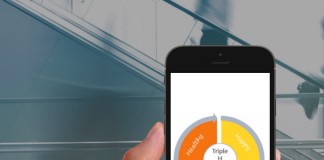Custom apparel has transformed from a niche market to a booming business opportunity. Whether you’re an artist looking to showcase your designs or an entrepreneur hoping to create a recognizable brand, t-shirt printing has become one of the easiest ways to step into the retail world. Thanks to affordable printing options and minimal start-up costs, anyone with creativity and determination can start their own custom apparel line. But how do you go from an idea to a successful t-shirt business? Let’s break it down.
Why Start a Custom Apparel Line?
Personalized apparel isn’t just a trend—it’s a powerful form of expression. Businesses use branded t-shirts to build team unity, influencers sell unique designs to connect with their audiences, and event organizers create memorable merchandise for attendees. Starting your own t-shirt line gives you the freedom to combine creativity with business savvy while targeting almost any market.
The real appeal lies in its affordability. Unlike many businesses, starting a t-shirt line doesn’t require a huge investment. You can scale your production as demand grows. It’s a low-risk entry into entrepreneurship that offers plenty of room to expand.
Add in the flexibility—working from home, choosing your niche, and deciding how much you want to produce—and it’s clear why so many creatives and entrepreneurs are choosing custom apparel.
Understanding Affordable T-Shirt Printing Options
The secret to affordable t-shirt printing lies in selecting the right method. With technology advancements, you no longer have to compromise between cost and quality. Each method serves a purpose, depending on your budget, design needs, and target audience.
Screen printing, for instance, has been around for decades. It’s ideal for simple, bold designs and bulk orders because the cost per print decreases with larger quantities. However, if you’re just starting out with smaller batches or want to experiment with complex colors, other methods might suit you better.
Direct-to-garment (DTG) printing is a modern solution. It works like a digital printer but on fabric. You get high-quality, detailed prints, even for one-off orders. It’s perfect if you’re focusing on creative designs with lots of colors but can be slightly costlier per unit.
For entrepreneurs prioritizing budgets, heat transfer printing offers a practical option. Designs are printed on heat-sensitive paper and transferred onto shirts using a heat press. It’s beginner-friendly, low-cost, and versatile—perfect for testing out designs before scaling up.
Then there’s direct-to-film (DTF) printing, a rising favorite among small business owners. It combines elements of DTG and heat transfer, allowing you to print detailed designs on a film that can be transferred onto various fabrics. It’s cost-effective for small runs while maintaining excellent quality.
Knowing your options makes it easier to choose the method that aligns with your budget and business goals.
Steps to Start Your Own Custom Apparel Line
- Research Your Niche and Target Market
A successful t-shirt line starts with understanding your audience. Who are you designing for—college students, fitness enthusiasts, startup employees, or niche groups like gamers or pet lovers? Picking a clear niche helps your brand stand out in a saturated market.Conduct some quick research. Explore trending themes on platforms like Instagram, Pinterest, and TikTok. Look for gaps in the market where your unique designs could fill a need.
- Create Eye-Catching Designs
Your designs are the heart of your t-shirt line. If you’re artistically inclined, tools like Adobe Illustrator, Canva, or Procreate can help you bring ideas to life. Don’t worry if design isn’t your forte—freelancers on platforms like Fiverr and Upwork can help create professional graphics based on your vision. The key is originality. Bold visuals, catchy slogans, or timeless simplicity—choose a style that resonates with your target audience.
- Choose the Right Printing Method
Selecting your printing method depends on your budget, order size, and design complexity. Start small with affordable options like a heat press or a DTF machine, then transition to screen printing for bulk orders as demand grows.
- Source Quality Materials
Even the best designs fall flat if printed on low-quality t-shirts. Research suppliers who provide soft, durable fabrics at reasonable prices. For eco-conscious brands, sustainable materials like organic cotton or recycled blends add appeal without breaking the bank. - Print On-Demand or In-House?
You have two options: purchase printing equipment or partner with print-on-demand services. Print-on-demand platforms like Printful or Printify handle printing, inventory, and shipping, letting you focus solely on design and marketing. On the other hand, owning equipment gives you greater control and higher profit margins—but requires upfront investment. - Set Up Your Online Store
Platforms like Shopify, Etsy, and WooCommerce make it easy to create professional online stores. Pair high-quality product images with clear descriptions. Highlight your designs, fabric quality, and customization options to attract buyers. - Market Your Apparel Line
Promoting your brand is key to success. Share behind-the-scenes content on Instagram or TikTok to engage your audience. Collaborate with micro-influencers who align with your niche to expand visibility. Launch limited-edition designs or offer discounts to create urgency and build loyal customers.
Keeping Costs Low While Maintaining Quality
Starting on a budget doesn’t mean cutting corners. Order t-shirts in bulk to reduce costs, and find local suppliers to save on shipping. Focus on high-quality, durable prints to build trust with your customers—people are more likely to recommend your brand if their shirts look and feel great after multiple washes.
Additionally, test your designs with small print runs before scaling up. This allows you to refine your offerings without wasting resources.
Success Stories: Small Apparel Brands That Made It Big
Many successful t-shirt businesses started from a single idea and a small budget. Brands like Threadless and Printful began with affordable printing techniques and scaled their operations over time. By understanding their audience and staying committed to quality, they turned humble beginnings into booming enterprises.
These success stories prove that with the right strategy, creativity, and persistence, anyone can create a profitable custom apparel business.
Conclusion
Starting your own custom apparel line is an exciting opportunity that blends creativity with business potential. With affordable t-shirt printing methods, the barriers to entry have never been lower. By understanding your market, perfecting your designs, and choosing the right printing options, you can bring your vision to life without breaking the bank.
Take the first step. Whether you’re creating t-shirts for a small group or a global audience, your dream business could be just a design away.







